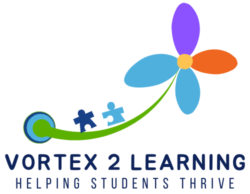Sight word instruction is crucial for students with mild to severe disabilities, particularly those on the autism spectrum who may struggle with phonics instruction. While phonics is a widely used method for teaching reading, it may not be effective for all learners. For autistic students, in particular, the relationship between letters and their sounds can be a challenging concept to grasp. This can lead to frustration and ultimately hinder their reading progress.
Research has shown that sight word instruction can be a successful alternative to phonics for students with disabilities. By focusing on teaching commonly used words by sight, students can become more confident in their reading abilities and increase their overall comprehension. Unlike phonics, sight word instruction does not require an understanding of the relationship between letters and sounds, making it an effective method for students who may struggle with this concept.
In my personal experience, I have found that many students on the autism spectrum struggle with phonics instruction. Despite their efforts, they may become stuck on a particular letter sound, preventing them from progressing further in their reading abilities. Sight word instruction has proven to be a successful method for these students, allowing them to build a solid foundation of frequently used words that they can recognize and read with ease.
Sight Word Reading Comprehension Program
Many schools have found a unique solution to address the varying needs of our students. By integrating the Edmark Reading Program (affiliate link) into the English Language Arts (ELA) curriculum, which utilizes sight word instruction along with phonics to accommodate different skill levels and cognitive abilities.
Special education teachers often use the Edmark Reading Program. The program helps students recognize words through repetitive practice and errorless learning. By breaking down learning into small steps and setting a 90% accuracy rate, the program boosts students’ reading confidence.
With minimal prerequisite skills required, sight word instruction proved to be highly effective in teaching reading to my exceptional students. To ensure optimal learning conditions, I provided a quiet, distraction-free 1:1 teaching environment, along with token boards for positive reinforcement.
As a teacher, I was impressed with the results my students achieved through the program and wanted to provide them with additional resources to enhance their sight word proficiency. I recognized that creating an engaging and interactive activity book could help my students work independently and move forward in their reading journey.
Sight Words Activity Books For Independent Practice
Consequently, teachers in special education understand the benefits of transforming educational resources into engaging activity books. Furthermore, they spend a lot of time and effort doing this. For this reason, I’ve created a series of sight words reading comprehension activities to supplement the reading program. These leveled reading comprehension worksheets feature over 350 sight words.

The reading and comprehension worksheets have a colorful picture cue and three answer choices that include the newly learned vocabulary word and two sight words previously learned. Your students will never encounter an unfamiliar word on any of the worksheets because it follows a systematic approach.
There are three activity books with 50 worksheets each that supplement the level 1 program (reading level K-1) for a total of 150 vocabulary words. Additionally, there are four activity books with 50 worksheets each that supplement the level 2 program (reading level 1-3). Combined, there are 350 worksheets or sight words for vocabulary-building practice.

The activity books are low prep—laminate once for longevity, durability, and years of use. Included are extra word symbols for cutting and laminating. All you have to do is add velcro dots and punch holes and place the worksheets in a binder for interactivity. Additionally, These worksheets are available in a digital format with self-checking activities for immediate student feedback. You will find these in the EASEL platform in the TPT store.
These Sight Words Activity Books Are Great For:
- Pre-K students ages 3-5 years through adulthood
- Elementary students who struggle with standard classroom reading materials
- Special education students
- Students with mild to severe disabilities
- Students on the autism spectrum
- Students with dyslexia
- English as a Second Language (ESL) learner
- English Language Learners (ELL)
- English as a Foreign Language (EFL) learner
- students who struggle with phonics.
- Anyone child or adult that has not mastered reading
What Educators Are Saying
I use this resource with so many students in my class. They are wonderful for my students with Autism that need the modifications.
— Tonya D.
SO user friendly! This was an excellent resource for students in my learning center.
— Meg W.
Additional Resources and Materials
If you are looking for more sight word worksheets, activities, and printables for building vocabulary and reading comprehension, you may like this CVC Words – Short Vowel Sounds Blending and Segmenting with Pictures Bundle.
Lastly, I’d like to invite you to join the vortex2learning club and have exclusive access to the freebie library resources. You will find a growing collection of educational lessons, activities, printables, worksheets, workbooks and so much more. You will be given a password that will allow you access at any time.




I like the helpful info you supply in your articles. I will bookmark your blog and check again here frequently. I am reasonably sure I’ll be informed many new stuff proper right here! Good luck for the following!
Your comment is awaiting moderation.